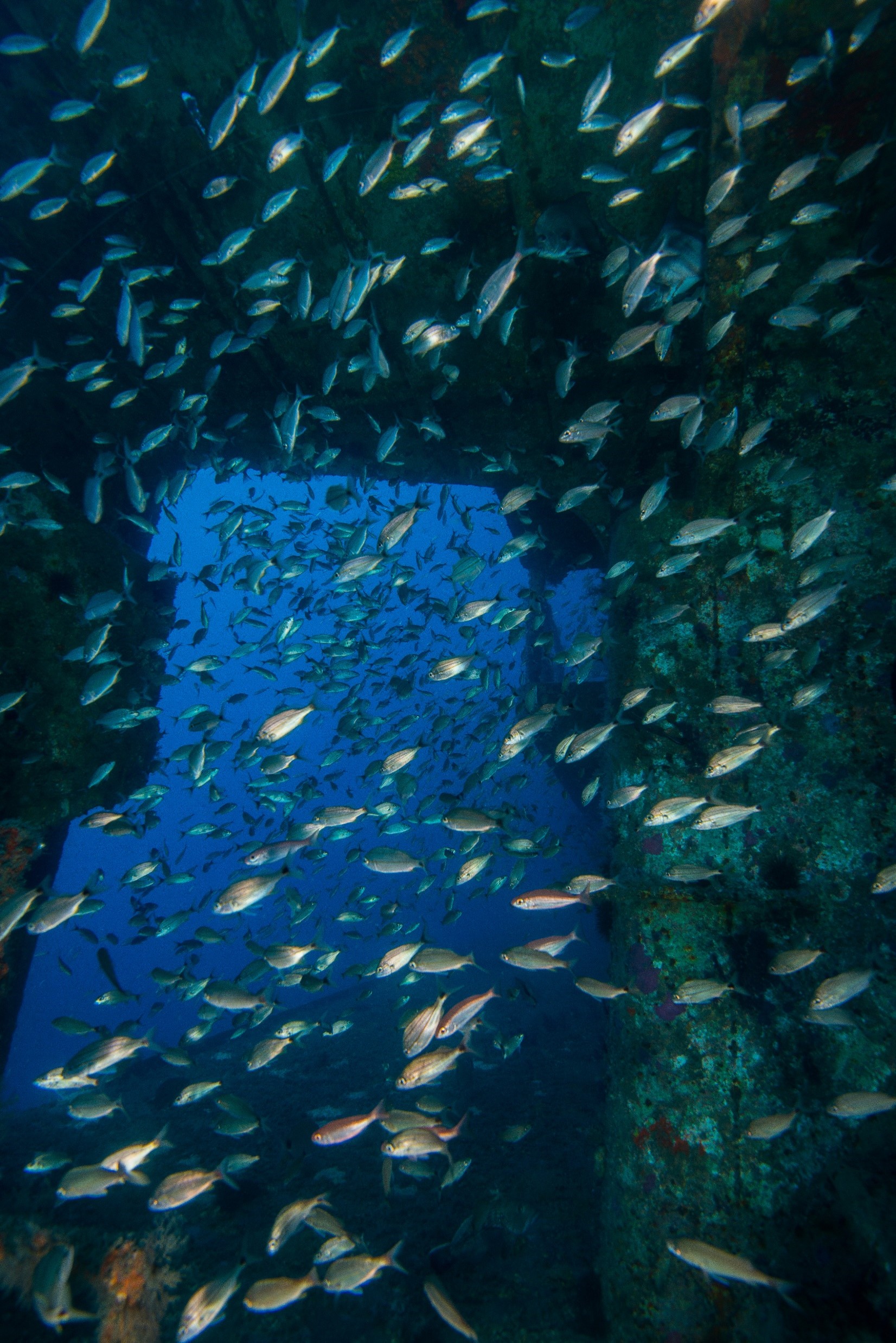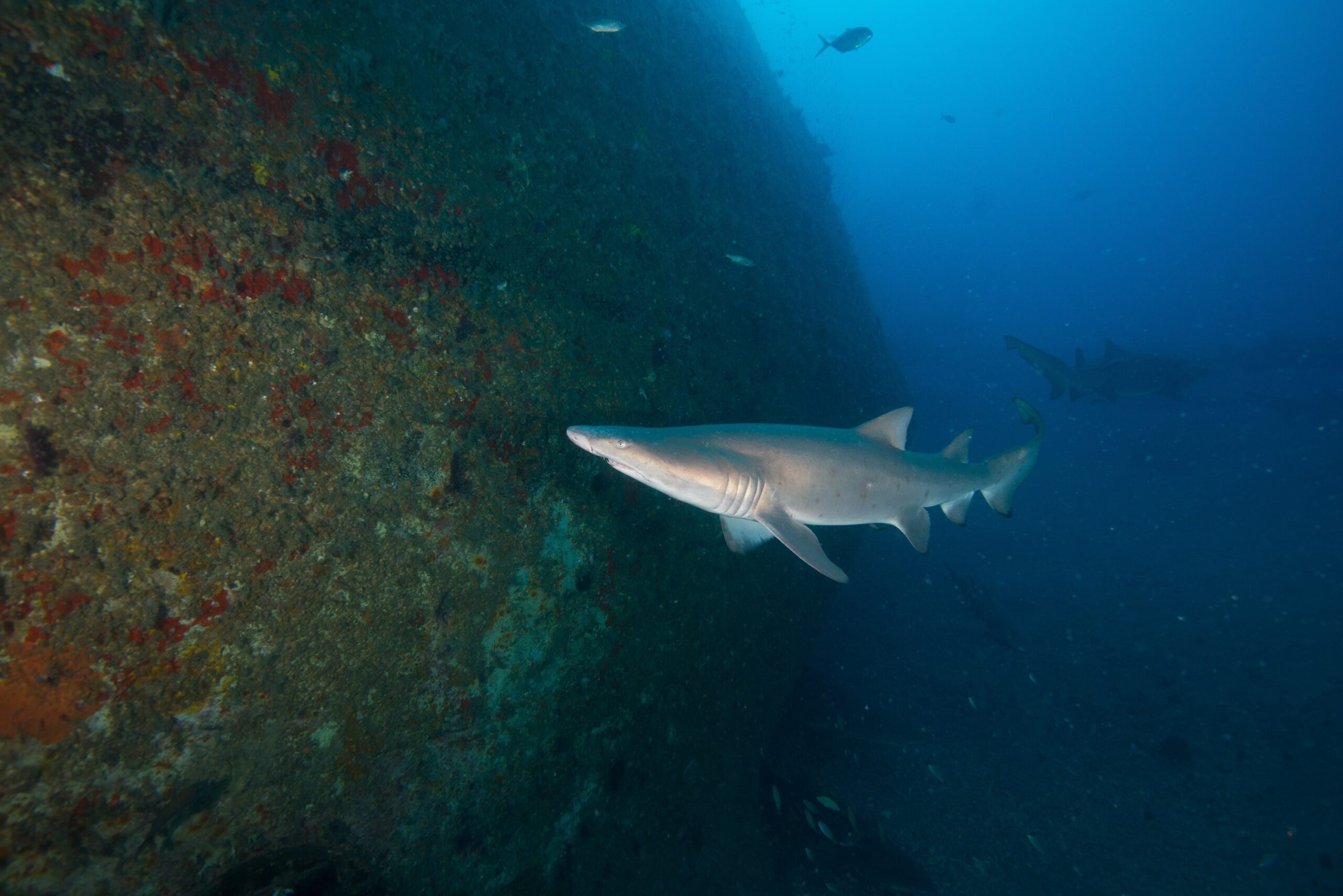
A new peer-reviewed publication in Nature Sustainability details the process and findings of an NCCOS and partner study that calculates the artificial reef footprint in the U.S. ocean.
Artificial reefs have become increasingly popular structures to create additional and restored habitat for marine life and–in turn–provide recreational fishing and diving opportunities, which helps boost local economies. These structures often include repurposed materials that are intentionally sunken (ships, train boxcars, aircraft, vehicles, chicken transport cages, voting machines, missile platforms) and concrete structures that are specifically designed and sunken to be artificial reefs. Despite the gaining popularity, deployment of these structures is managed by individual state programs, and data captured for the structures are not standardized across state borders. Because of this, it has been difficult to quantify and understand the benefits and risks of artificial reefs to ocean life and recreation.
To gain a better understanding of the extent of artificial reefs, the first step was to quantify the spatial footprint of these ecosystems. NCCOS scientists led a national team of scientists and artificial reef directors from the 17 U.S. states and territories that include artificial reef building programs. Through this collaborative effort, the team compiled the best-available spatial data for artificial reefs from each state dating from the late 1800’s to 2020. Once the data were gathered, the team converted all data into a standard format to create one seamless data set. With this information the team was able to calculate the first nationally coordinated artificial reef footprint in the U.S. ocean. This cohesive calculation revealed that purposely sunk reef structures occupy 19.23 square kilometers of the ocean. This seafloor footprint is equivalent to 3,600 American football fields of the ocean floor. For the purpose of this study, the team focused on intentionally sunk materials.

While the team’s calculations omit shipwrecks and structures such as oil rigs and wind turbines, these other types of built structures often evolve into artificial reefs teeming with marine life. As such, the information from this study will help inform sustainable use of artificial reefs, including other built structures, such as offshore wind turbines, as a measurable ecosystem enhancement method.
This work is part of a broader NCCOS project to assess the ecological function of artificial reefs. View the full publication in Nature Sustainability.
Partners in this effort include Alabama Department of Conservation and Natural Resources, Florida Fish and Wildlife Conservation Commission, Georgia Department of Natural Resources, Hawaii Department of Land and Natural Resources, Massachusetts Division of Marine Fisheries, Mississippi Department of Marine Resources, New Jersey Department of Environmental Protection, New York State Department of Environmental Conservation, NOAA’s National Marine Fisheries Service, North Carolina Division of Marine Fisheries, Rhode Island Department of Environmental Management, Texas Parks and Wildlife Department, The Nature Conservancy, the University of Guam, Virginia Marine Resources Commission.

